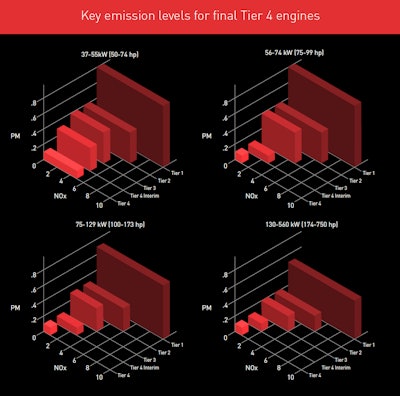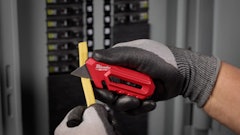
It’s crunch time for the implementation of final Tier 4 engine emission standards. Over time, it has become difficult to understand both what these standards are trying to achieve and whether or not they apply to a particular application. In the interest of making them a little easier to digest, CK Power has designed a visual guide to some of the most important aspects of the new EPA standards.
In the first section of the CK Power infographic, you’ll see how final Tier 4 emissions have changed over time. The EPA introduced diesel engine regulations back in 1996 as a way to curb emissions. In 2004, the EPA introduced Tier 4 emission standards, which began to be enforced for different engine models in 2008. By 2015 Tier 4 engine requirements will be in full effect. Note that these regulations only affect non-road construction equipment.
"Diesel engines designed for highway-use applications, such as tractor-trailers and pickup trucks are regulated by the EPA. But because final Tier 4 standards focus on non-road applications, they do not fall under this particular standard," says Clayton Castello, Operations Manager at CK Power.
"Applications such as excavators, earthmovers, front loaders, etc. are, however, subject to final Tier 4 standards since they are classified as non-road applications by the EPA. Pumps, non-emergency generators and compressors are also subject to this standard.
It should be noted, too, that mobile generators are subject to the rule when they are acting as a primary power source, or for load management and peak shaving. The only time a mobile generator would not fall under Tier 4 standards is when it is used only as an emergency power application."
The second section of the CK Power infographic contains a 3D graphic of how the EPA’s regulations reduce nitrogen oxides (NOx) and particulate matter (PM) with each tier of emission standards. Reducing these harmful particles has been the EPA's goals, and for certain applications NOx and PM emissions have been quartered.
The final section provides a flow chart for understanding whether or not your application will require a final Tier 4 engine or final Tier 4 modifications. These regulations apply to most non-road equipment, but certain applications aren’t required to meet the current standards. Use the flow chart to see what category your application falls under.
Click on the button above to download the CK Power visual guide to Tier 4 Final regulations.













